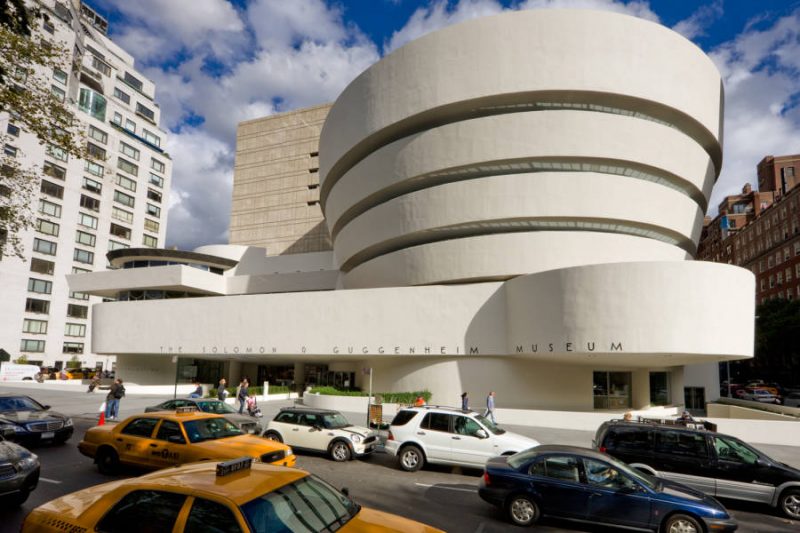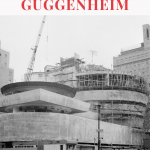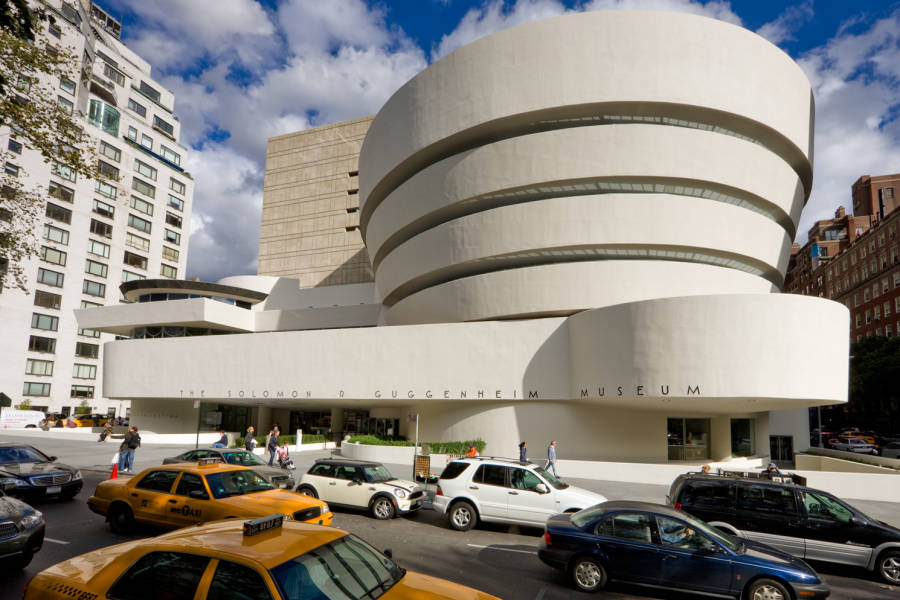
The Solomon R. Guggenheim Museum sits boldly upon the famed ‘Museum Mile’ of Manhattan’s Upper East Side. The iconic building looks quite different from most museums, just as the art it holds is different too. Abstract art, non-objective art, modern art— you’ll find it all at the Guggenheim. But what’s the story behind this museum’s dramatic, circling walls? Let’s find out.
The Guggenheim’s History
In 1939, Solomon R. Guggenheim, a descendent of a wealthy mining family, established the Guggenheim Foundation to create and promote the appreciation of modern art. Guggenheim’s collection soon grew large enough to merit a building of its own, so Frank Lloyd Wright was hired to create a structure to house the “Museum of Non-Objective Painting,” as the Guggenheim was first called.
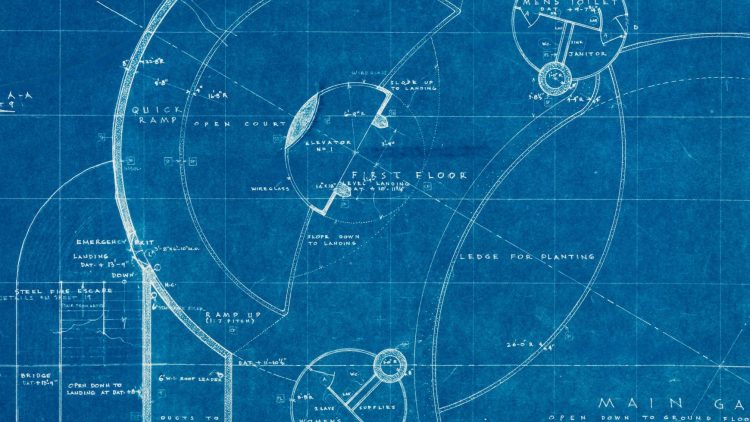
Guggenheim told Wright he wanted “a temple of spirit, a monument!” and the architect certainly delivered. Over a period of 16 years, Wright created 6 different blueprints and 749 architectural drawings until the museum we know today broke ground in 1956.
The long delay in between the planning of museum and the construction of it was due to a number of things. Design plans changed, property had to be acquired, the cost of construction went up and Guggenheim himself passed away in 1949.
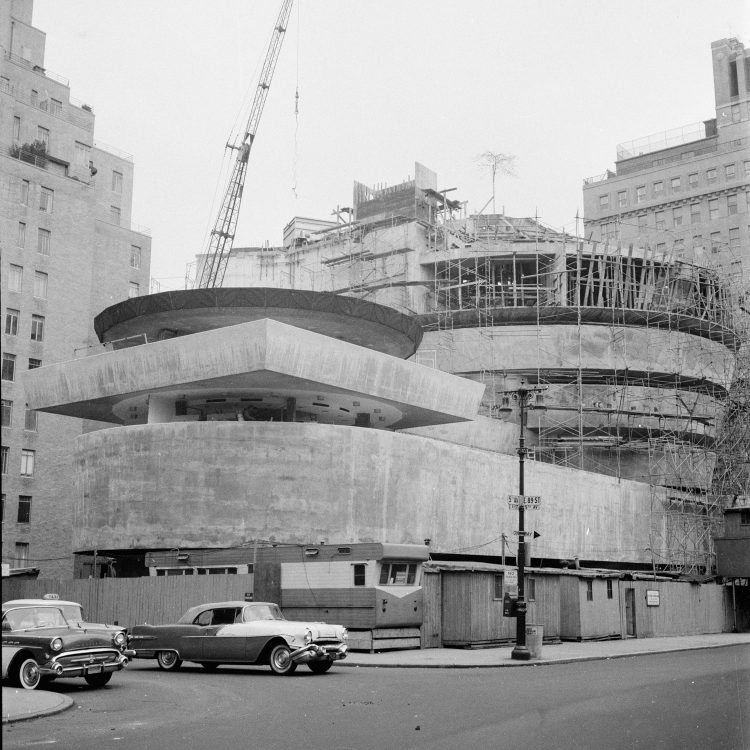
Tragically, neither Guggenheim nor Wright would live to see “the temple of sprit” open— Wright too passed away 6 months before the building’s completion on October 21st, 1959.
The Design of the Guggenheim
The exterior facade of the Guggenheim is just as impressive as the interior design— a large, wrapping structure covered in white concrete (Wright originally wanted red, but it was deemed too costly), the museum demands attention from a passerby.
Inside the buildings lies its famous spiral ramp and atrium, part of the ‘inverted ziggurat’ design that Wright himself created. Some believe the ramp was inspired by Vatican Museum’s double staircase, designed by Giuseppe Momo.
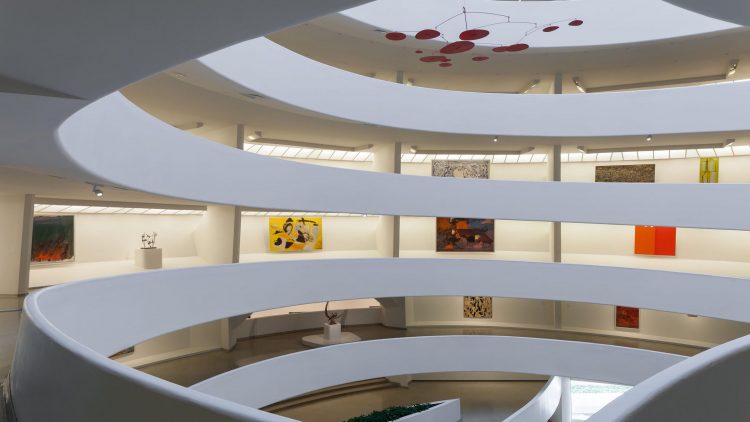
Either way, the Guggenheim was designed in such a way that a visitor would not have to retrace their steps to exit. They would take an elevator to the top, then leisurely walk down the ramp, viewing the art, until they reached the bottom.
Before the museum opened, it received critiques from artists who worried that the building would be so ‘different’ it would overshadow their art. Wright believed otherwise, thinking that the design of the Guggenheim makes “the building and the painting an uninterrupted, beautiful symphony such as never existed in the World of Art before.”
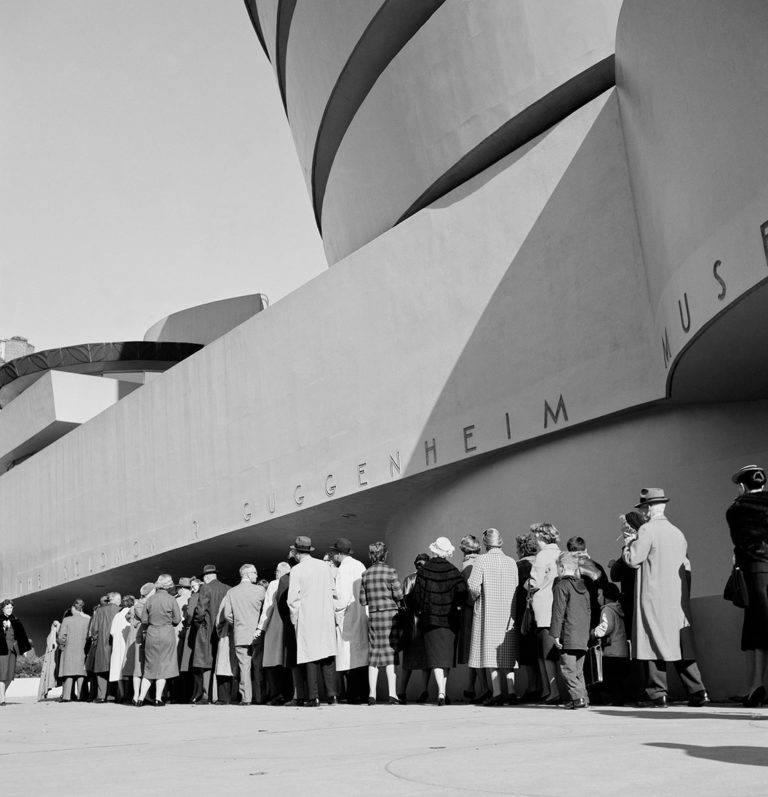
With the creation of the Guggenheim, Wright showed another way to design a museum. Previously, it was thought that museums could only be designed in an impersonal grandiose or plain fashion, but Wright created another way— a museum could be a personal statement, an artwork in and of itself.
The Guggenheim Today
The Guggenheim has undergone a number of restorations and renovations since its construction to bring it back to its original glory. Exterior facades have been repaired, windows replaced and skylights uncovered.
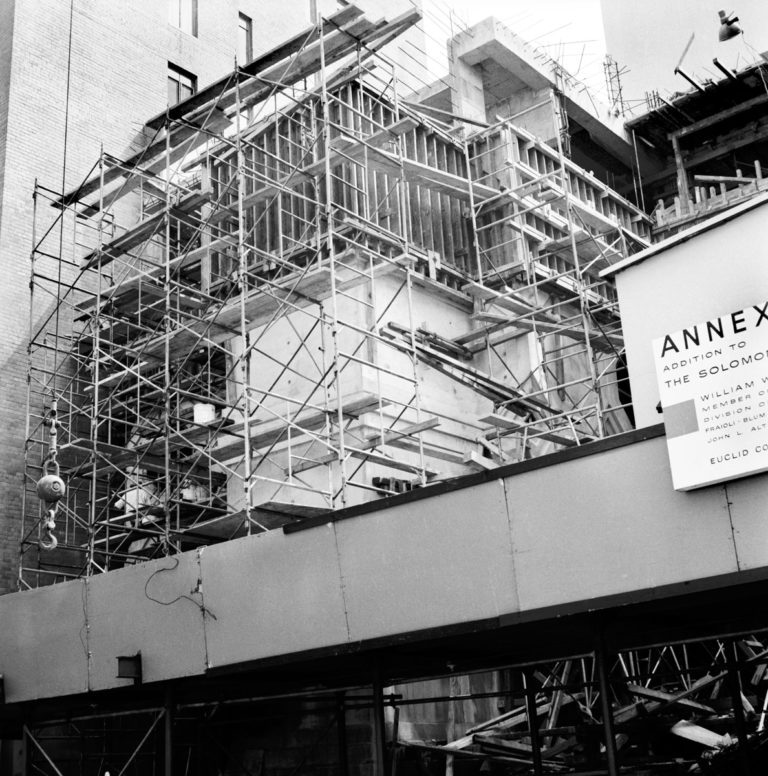
In 1990, an eight story tower was constructed that connected to the Guggenheim. It was part of Wright’s original plans, but never came to fruition. The tower includes offices, a restaurant and workspaces.
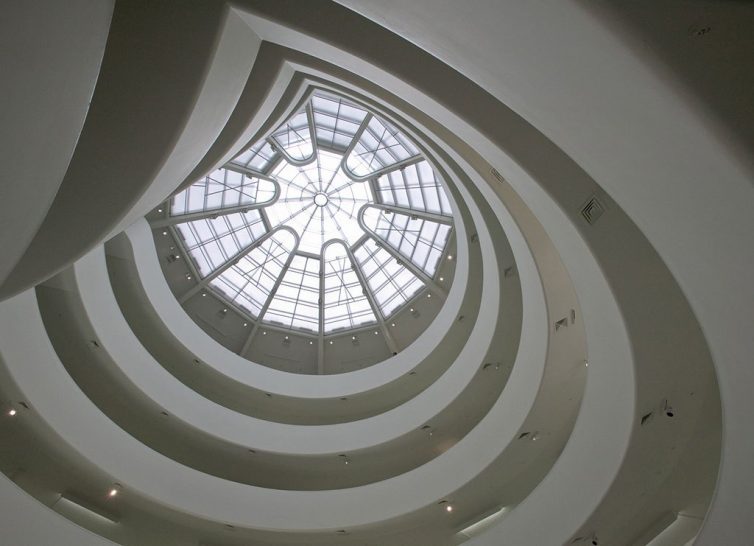
In 2008, the museum was designated as a National Historic Landmark and in 2019, it was designated to be a UNESCO World Heritage Site. 60 years later, the Guggenheim continues to wow the 1 million plus visitors that come through its door each year, and it shows no signs of stopping.
Want to read more about Mid Century Modern show-stoppers? Check out Richard Neutra. And of course, don’t forget to follow us on Instagram, Facebook and Pinterest for more Mid Century Modern inspiration!

